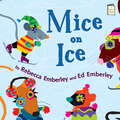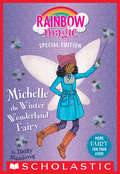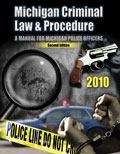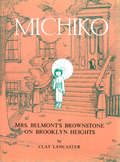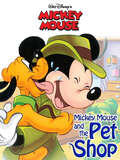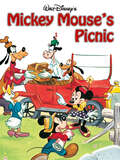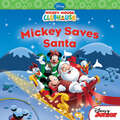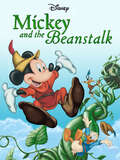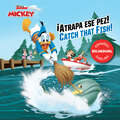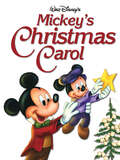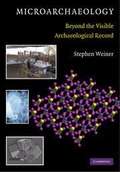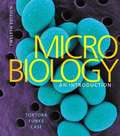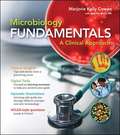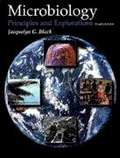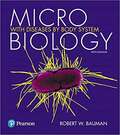- Table View
- List View
Mice on Ice (I Like to Read)
by Rebecca EmberleyThought-provoking visual illusions and characters that are bright, bold, and original accompany a text that is pleasing to the ear yet just right for the newest reader. Mice skate on ice. As they skate, their blades leave lines that depict a cat. Magically, the cat appears, color, graphic, and three-dimensional. What happens next? Why, the cat and the mice skate together! An I Like to Read® book, Guided Reading Level C.
Michelle Obama; Barack Obama
by Joy BrewsterWhat did Michelle Obama do before she became First Lady? What is important to her? How did Barack Obama make history? What path did he take to become president?
Michelle the Winter Wonderland Fairy (Rainbow Magic)
by Daisy MeadowsLet it snow! Kirsty and Rachel are together again! Kirsty's mom won an online contest for a photo she submitted to a travel website. The prize is a trip for four to a beautiful snowy resort where a winter festival is being held.There's just one problem-- Jack Frost has stolen Michelle the Winter Wonderland Fairy's magic items! As long as they're missing, people won't be able to enjoy all the wintry activities. Rachel and Kirsty have to help Michelle before Jack Frost ruins winter fun for everyone!
Michi the Stonecutter: A Tale from Japan (Fountas & Pinnell Classroom, Guided Reading Grade 3)
by John Perritano Cheryl NollNIMAC-sourced textbook
Michigan
by Macmillan McGraw-HillThis book is organized to help you understand and apply social studies content and skills as you read. The Big Ideas in this textbook are important ideas in social studies. They will help you understand each unit and its Michigan Standards.
Michigan Criminal Law and Procedure: A Manual for Michigan Police Officers (2nd Edition)
by Michigan Department of State PoliceSeveral legal instructors throughout the state of Michigan contributed to the development of this and previous editions of this book in hopes that it will help police officers and police recruits comprehend the legal parameters that they operate within on a day-to-day basis.
Michigan Holt Elements of Literature, First Course
by Kylene Beers Carol Jago Deborah ApplemanNIMAC-sourced textbook
Michigan McDougal Littell Literature: British Literature
by Arthur N. Applebee Jim Burke Janet AllenTextbook on British literature for Michigan students.
Michiko or Mrs.Belmont's Brownstone on Brooklyn Heights
by Clay LancasterMICHIKO is a little Japanese girl who, all alone, makes the long journey from a small country village in Japan to her new home and life in Brooklyn Heights.This is how Clay Lancaster's delightful picture-story for young readers begins. And before it ends, Michiko and her readers share many experiences-some happy, some sad, some surprising, and some just funny-as Michiko learns how life is lived in America.Immediately Michiko learns that Japan and America are quite different-New York's tall buildings, her new house (an old brownstone), her new guardian (Mrs. Belmont), and even American food are things she must get used to.At times Michiko finds herself frightened, or excited, or just plain bewildered about things like school, Thanksgiving, and Christmas. Through Michiko, readers get the wonderful experience of rediscovering those American customs and traditions so often overlooked or taken for granted. Besides the typically American scenes and events, Michiko and her classmates also share a delightful surprise in the Brooklyn Botanic Garden.Above all, Michiko's readers will see those human values of warmth, kindness, and generosity which every person in the world holds in common.
Mickey Mouse and the Pet Shop
by DISNEY BOOK GROUPMickey works at a pet shop and takes care of a troublesome puppy.
Mickey Mouse's Picnic
by Disney Book GroupOne beautiful summer day, Mickey and Minnie Mouse decide to go on a picnic! They invite Pluto, Goofy, Daisy Duck, and Clarabelle Cow. They do not invite Donald Duck...something always goes wrong when he is around! When they drive away, no one notices that Donald saw them leave him behind! So when the friends reach the picnic grounds, they decide to go have fun before eating. But when they return, their picnic basket disappeared! Where could it have gone?
Mickey Saves Santa
by Disney PressMickey and his friends are all ready for a Christmas Eve sleepover at the Clubhouse. They've written their lists and can't wait for Santa Claus to arrive. But there's a big problem at the North Pole and Santa won't be coming unless he gets some help. Join your favorite Clubhouse friends as they set out to save the day and rescue Christmas.
Mickey and the Beanstalk
by Disney Book GroupIn Happy Valley, the sun is always shining and everything is pretty and green. A magical harp sings a beautiful song, casting a spell of peace over the valley. But when the harp suddenly disappears, Happy Valley turns dark, and everything stops working and growing. Farmer Mickey, Farmer Donald, and Farmer Goofy are awfully hungry, so when Mickey decides to sell their cow in exchange for food, he returns with three magic beans! Don't miss this retelling of the classic tale of Jack and the Beanstalk—with a Disney twist!
Mickey and the Roaster Racers: Catch that Fish! / ¡Atrapa ese pez! (English-Spanish)
by Disney Book GroupFollow along with Mickey and his friends in this English-Spanish bilingual storybook. Mickey Mouse y Goofy están muy emocionados por su viaje de pesca anual, pero cuando sus amigos deciden unirse a ellos, ¡la tranquila excursión de Goofy y Mickey se convierte en una misión de rescate! Mickey Mouse and Goofy are excited for their annual fishing trip. But when the other Roadster Racers decide to join them, Mickey and Goofy’s quiet outing turns into a rescue mission!
Mickey’s Christmas Carol
by DISNEY BOOK GROUPBah, humbug! Ebenezer Scrooge doesn’t understand why everyone is so cheerful around Christmas time. Rich and greedy, Scrooge doesn't even want to let his clerk, Bob Cratchit, spend time with his family on Christmas Eve. But when Scrooge goes home late one night, a ghost tells him that he will be visited by three spirits—and that he must listen to what they have to say. Will Scrooge be able learn the true meaning of Christmas, or will he be greedy and lonely forever? Don't miss this retelling of the classic tale of A Christmas Carol—with a Disney twist!
Micro Economics-1 B.A. First Semester as per SEP Syllabus 2024
by Sri Kashinath Patil Dr Sharanabasappa WaddanakeriIt is an educational text book for BA 1st Semester english Medium Students of All Universities in Karnataka, framed on the basis of state Education Policy-2024-25 Syllabus.
Micro-Life Student Book
by National Science FoundationAs you examine the activities in this book, you may wonder, "Why does this book look so different from other science books I've see?"The reason is simple: it is a different kind of science program, and only some of what you will learn can be seen by leafing through this book!
MicroEconomics: A Basic Perspective
by Roger MackFor many of you, economics is among the most feared and most challenging courses that you will enroll in during your college experience. Despite this, economics is also a subject matter that will stay with you, be actively used and may well have the most impact throughout your life. Economics involves a way of thinking about choices and outcomes. In a very real sense, both the teaching and the learning of economics is "work in progress." Your choices and the choices of others around you, the resulting outcomes, and the opportunities, both chosen and given up, greatly determine much of the quality of your life.
Microarchaeology: Beyond the Visible Archaeological Record
by Stephen WeinerThe archaeological record is a combination of what is seen by eye, as well as the microscopic record revealed with the help of instrumentation. The information embedded in the microscopic record can significantly add to our understanding of past human behaviour, provided this information has not been altered by the passage of time. Microarchaeology seeks to understand the microscopic record in terms of the type of information embedded in this record, the materials in which this information resides, and the conditions under which a reliable signal can be extracted. This book highlights the concepts needed to extract information from the microscopic record. Intended for all archaeologists and archaeological scientists, it will be of particular interest to students who have some background in the natural sciences as well as archaeology.
Microbiology An Introduction 12th Edition
by Gerard J. Tortora Berdell R. Funke Christine L. CaseThe Twelfth Edition of Tortora, Funke, and Case’s Microbiology: An Introduction focuses on big picture concepts and themes in microbiology, encouraging students to visualize and synthesize tough topics such as microbial metabolism, immunology, and microbial genetics. The text and accompanying resources also help students make connections between microbiology theory and disease diagnosis, treatment, and prevention.
Microbiology Fundamentals: A Clinical Approach
by Marjorie Kelly Cowan Jennifer Bunn Jennifer HerzogIn this book, all core concepts are covered, but streamlined to better fit the length of your course. A more modern, visual text fits with today's students and the way they learn.
Microbiology Principles and Explorations 4th Edition
by Jacquelyn G. BlackThe result of years of teaching and investigation, the author's reader-centered writing style provides readers with the background they need to truly comprehend the key principles.
Microbiology With Diseases By Body System
by Robert BaumanKEY MESSAGE: Designed for pre-nursing and allied health readers, Microbiology with Diseases by Body System, 2/eretains the hallmark art program and clear writing style that have made Robert Bauman's book a success. Filled with intriguing content based on cutting-edge research that engages readers, the Second Edition features increased clinical coverage as well as a strong focus on the beneficial effects of microbes. Media Manager 2.1 provides instructors with the most robust media program available in the microbiology market for dynamic classroom presentations. In addition to all of the art, photos, and tables from the book in JPEG or PowerPoint format and customizable PowerPointlecture outlines, Media Manager 2.1 also includes 115 brief animations that depict complex microbial processes. These animations also appear on The Microbiology Place Website, with quizzes, for readers. <P><P>KEY TOPICS: A Brief History of Microbiology, The Chemistry of Microbiology, Cell Structure and Function, Microscopy, Staining, and Classification, Microbial Metabolism, Microbial Nutrition and Growth, Microbial Genetics, Recombinant DNA Technology, Controlling Microbial Growth in the Environment, Controlling Microbial Growth in the Body: Antimicrobial Drugs, Characterizing and Classifying Prokaryotes, Characterizing and Classifying Eukaryotes, Characterizing and Classifying Viruses, Viroids, and Prions, Infection, Infectious Diseases, and Epidemiology, Innate Immunity, Adaptive Immunity, Immunization and Immune Testing, AIDS and Other Immune Disorders, Microbial Diseases of the Skin and Wounds, Microbial Diseases of the Nervous System and Eyes, Microbial Cardiovascular and Systemic Diseases, Microbial Diseases of the Respiratory System, Microbial Diseases of the Digestive System, Microbial Diseases of the Urinary and Reproductive Systems, Applied and Environmental Microbiology. MARKET: For all readers interested in microbiology.
Microbiology for Surgical Technologists
by Margaret H. Manning RodriguezPart of a crucial foundation for perioperative care, MICROBIOLOGY FOR SURGICAL TECHNOLOGISTS, 2nd Edition helps surgical technology students understand and prevent disease transmission in clinical settings. In addition to exploring the vast microbial world, learners investigate the infectious disease process and disease pathologies, correlating them with anatomical body systems. Health and safety procedures are important topics, with key procedures for protecting patients, team members, and the students themselves. MICROBIOLOGY FOR SURGICAL TECHNOLOGISTS, 2nd Edition is also packed with helpful extras, including colorful photos, realistic case studies, end-of-chapter questions, and special boxed features that call out interesting facts and anecdotes to highlight the importance of aseptic and sterile techniques in every surgical intervention.
